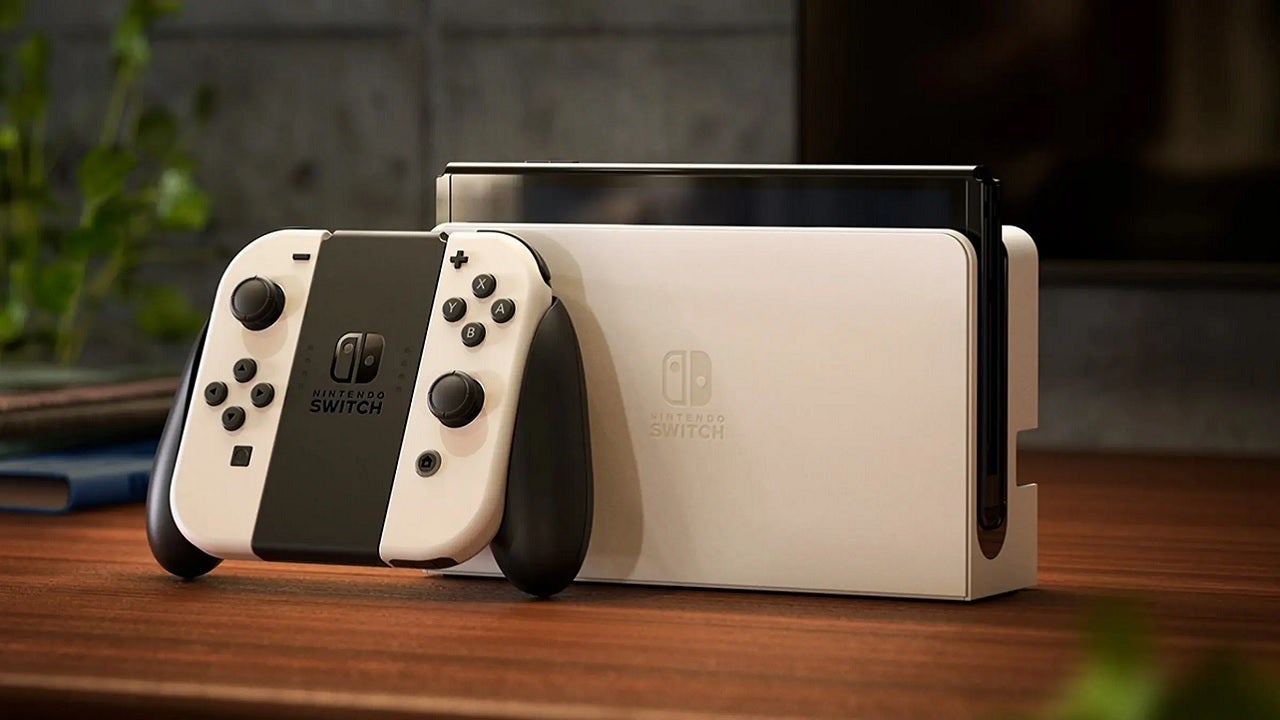Sony has been making some of the best-quality televisions I’ve had the pleasure of testing for multiple years, and that doesn’t change with the X93L. While the company doesn’t compete on the affordability front, its televisions are almost always worth the premium price for a better viewing experience.
The price and performance of high-end mini LED televisions can be a bit confusing these days, though, as OLEDs have gotten both brighter and more affordable, closing what used to be a wide gap between the two technologies. But from Sony’s perspective, this $2,200 television is a considerable discount compared to its flagship OLED, the A95L, which costs $3,500.
We of course don’t live in a bubble and know that there are other manufacturers out there that make more affordable OLEDs, namely LG, but the price, positioning, and performance of the X93L makes a bit more sense when viewed through that lens.
And while I would probably still recommend those more affordable OLEDs for those who don’t want to compromise on image quality and performance, Sony’s X93L still manages to make some compelling arguments for itself.
Sony X93L – Design and Build
Pulling the X93L out of the box was a lot more strenuous of a task than I’ve been accustomed to in recent years: this television is heavy and tips the scales at 70 pounds. The entire box is just shy of 100 pounds. Most of the time you can blame the stand for that, but the X93L has small, relatively lightweight feet instead of a center-mounted base. No, the weight is entirely the television itself.
This X93L is not particularly thin. It has a rather beefy inch-or-so thickness all the way around, which doesn’t sound like much, but it adds to the bulk and weight. Compared to OLEDs which are basically just the thin display for a good chunk of television, the X93L feels very big for a modern flatscreen.

The chunky build and substantial weight aren’t factors that are likely to bother you once you’ve got it in position, but it’s not easy to set up (the box actually recommends three people for the 65-inch version) and you’ll need a very sturdy bracket if you plan to wall mount it.
I’m not a wall mount fan, which is why I’m particularly jazzed about the design Sony chose for the optional feet. There are two mounting points for the feet on either side: wide or tight. That means if you have a particularly large media console, you can space the feet wide for both extra stability as well as for the look. If you are using a smaller media console like I do in my testing room, you can mount them closer to the center. Many brands are doing this now, but I’m still really happy to see it here since more choice is never a bad thing.
The front of the television is really pretty and features a very slim bezel all the way around and basically no other distractions. In typical Sony fashion, the company wants you focused on what’s on the screen, not on any flashing lights or ostentatious logos.
The rear of the TV has some cable management that is facilitated by panels that fit over sections of the rear. Once you have cables in place, you can fit the panels over those sections and hide most of it. Unfortunately, Sony’s rather simple feet don’t have any kind of routing for cable management, but I will say you probably won’t notice too much since the display is seated so low – there is barely any space to see under the panel.

Connectivity-wise, the Sony X93L features four HDMI ports (three with bottom access and one with side access) but, unfortunately, only two of them are HDMI 2.1 and one of those is reserved for ARC/eARC. On a television that costs more than $2,000 in 2023, I now expect to find at least three if not four HDMI 2.1 ports. With this setup, you can’t have more than one console connected to the television at a time with full support for the latest games if you’re using HDMI to manage your audio – which you absolutely should and given Sony’s first-party home theater options, the company fully expects you to. If you only have a PlayStation 5 or Xbox Series X and a Switch, this probably won’t bother you. But if you have both next-gen consoles or one console and a PC and you want them to both be connected at the same time, one of them is going to be hamstrung.
Beyond that, the X93L has a composite video, Ethernet, two USB ports, and digital audio inputs. The power input is located on the opposite side of the TV from the rest of the inputs (the right side, if you’re looking at the display from the front). It also supports WiFi and Bluetooth.
Sony X93L – The Remote
Last year, Sony moved from using a more classic remote style that resulted in a hulking, behemoth of a controller to a much more compact, smaller style. I said it last year and I’ll say it again: this is such a huge quality of life improvement.
If you look at the remote Sony was using through 2021 and compare it to the one that comes with the X93L, the difference is night and day. Gone are the superfluous buttons I never used, replaced with a much smaller design that has only the essentials. I actually prefer this remote over other small ones from competitors, specifically the ones Samsung makes. I like the Samsung remotes in theory, but they are actually too simple.

There are a lot of features on televisions and in order to cram access to all of them, Samsung made some buttons serve double-duty, which isn’t super intuitive. Unless you spend time learning the remote, you wouldn’t know you had to hold down a button to gain access to a certain menu. Sony doesn’t force you to do that because it manages to fit enough on here to serve all possible purposes, but the result isn’t a remote that is so large that it is cumbersome.
My only complaint with Sony’s remote is that on the control pad, the company puts these little raised divots that I assume are there to help you feel it. These aren’t new: they’ve been present on Sony remotes for years, but I am starting to notice an issue. These little raised pieces of plastic are quite hard and if you need to use them for more than just a few pushes, they can actually make that pad of my thumb hurt. I notice it most when I need to type out an email address or password.
Sony includes six pre-installed shortcuts on the remote for the X93L, and my review unit had Netflix, Disney+, Prime Video, YouTube, and Crunchyroll (Sony bought Crunchyroll recently, so this makes sense) as well as Bravia Core, Sony’s own movie streaming service. I actually use all six of these services, so I’m happy to see them all here.
Sony X93L – Software and UI
If you’ve used Google TV (or Android TV before it), then you’ll feel right at home on the X93L. This is actually one of my favorite smart TV interfaces and while yes, it does throw ads at you no matter what you do, you can reduce them by activating “Apps Only Mode” in the system settings. That brings your ad experience down to just the top banner, which I know will still be too much for some people, but I am not particularly offended by it.
I’ve used Google TV as my daily driver on my personal television for the last few years and while it tends to bog down older TVs and can become slower over time, it is never such a bad experience that I get frustrated.

The implementation here is quite good. The interface feels very snappy and responsive and apps (and associated content) launch quickly and without issue. On WiFi, I didn’t even ever see any video quality buffering issues and everything that played was immediately high quality. Even better, nothing auto-plays from the home screen – I’m looking at you, Samsung Tizen.
Sony gives you a lot of options for customizing your viewing experience. In addition to Standard picture mode, the X93L offers Vivid (which you should never use in my opinion), Cinema, Graphics, Photo, Dolby Vision, and IMAX Enhanced as well as Custom. On Netflix, it gives you the option to select among vivid, bright, or dark as well. I tend to use Cinema or Custom, but just in picture modes and without getting into the weeds of options (that do indeed exist) there are a lot of ways to make it so what you’re watching is tuned to your specific tastes.
The television supports HDR in HDR10, HLG, or Dolby Vision formats. In addition to other settings like black point and brightness, Sony has a particularly robust list of settings for motion. While I typically turn off any motion smoothing on any other television, I actually enabled a few of these during testing because they made such a positive difference in my viewing experience.
With all motion settings turned off, I noticed that the X93L would exhibit some noticeable stutter in slow panning shots, which made footage look jittery and unrealistic. Just turning on motion enhancer to the lowest setting immediately cleaned this up and I couldn’t see any downsides to having it enabled. Unlike other motion effects from competitor displays, motion never looked overly smooth or unrealistic, which is a testament to Sony’s processing technology.
Sony is also very proficient at upscaling 1080p footage to 4K, to the point that even in televisions years ago, I actually legitimately did not realize I wasn’t getting a 4K stream. That continues here, and footage is expertly upscaled and artifacts are removed.
Sony X93L - Picture Quality
For games, television, and movies, the Sony X93L performs well. While it won’t make the best PC monitor, especially for those who value color accuracy for photo and video editing purposes, this television is great for all forms of entertainment.
In my testing, the X93L covered 96.7% of sRGB, 82.5% of Adobe RGB, and 82.9% of DCI P3 color gamuts with an average Delta E of less than two, which is very good. All three of those gamuts cover a slightly different range, though sRGB is the most common for general viewing purposes. To hit that much of all three is great.
What’s not so great is the panel’s uniformity, which is lackluster. While the center of the display was exceptional, the performance dipped in the corners. This isn’t something you are going to notice when watching television, movies, or playing games, but it means the television isn’t going to be great for use as a monitor. That’s probably fine, though, since that’s not the intended use case and I don’t imagine many were planning to deploy it as such. Also of note, uniformity varies from panel to panel, so your experience might be different than mine.

As mentioned above, the X93L has a lot of settings you can tweak to make the viewing experience your own and I have no doubt with some professional color calibration, it can do even better than what I tested here. It even allows you to adjust color output to be one of several color gamuts (although I didn’t find this changed my testing results). But all that said, what’s most important is that out of the box, it will be right at home in the center of your living room.
The X93L resists glare reasonably well and even if it is visible, the television’s excellent brightness can usually overcome it. That means it will be a welcome addition to living rooms regardless of the lighting situation.
Off-angle viewing does result in a dip in quality, with slightly washed-out colors and weaker contrast, but it’s not horrible. Unfortunately, any reduction should be considered carefully since at the price the X93L sits at, you can get an OLED which will not have this problem at all.
In summary, the X93L does a very good job of making content look true to life. Colors appear on screen as you would expect them to in real life, and I didn’t find any one color to be more dominant than any other in a way that would be disruptive to a normal viewing situation.
Sony X93L – Gaming Performance
I absolutely loved gaming on the X93L. While all gaming will benefit from what this television has to offer, PS5 players will notice it the most because this television actually communicates with the console. Through Auto HDR Tone Mapping and Sony’s Auto Picture Mode, the TV makes the PlayStation look its best without any input from the player (though you can make changes if you want).
Not only do games look fantastic, but the processing behind Sony’s dimming coupled with the support for high framerates and low input lag meant that I was getting fully immersed in games in a way that was on par with my experience with OLED TVs.
As a note, the X93L supports up to 120Hz at 4K, VRR, and ALLM, so all the necessary features for console gaming in 2023 are here. Additionally, Sony finally has implemented a game-specific menu. This game bar isn’t as good as what we’ve been getting from LG and Samsung for the last few years (it doesn’t show the active framerate of what is being displayed, for example), but I’m so glad to see it here at all. The options are pretty limited, but you can turn VRR on and off, adjust motion blur, adjust the brightness of the blacks, and enable and customize a crosshair. I look forward to Sony building on this framework in future releases.

One feature found in the game bar that I didn’t think I’d be using was the black equalizer. While off by default, you have access to three levels of shadow brightness. The X93L’s contrast is so good, often I would find that the darks were too dark to actually enjoy gaming – I need to be able to see what I’m looking at. Just enabling the first level of the black equalizer cleared this problem up without negatively impacting the rest of the viewing experience. Lesser black equalizers can result in very washed-out contrast across the frame, but that didn’t happen here.
A problem I’ve noticed in comparable mini LED displays like the Samsung QN90C is that dimming is poorly controlled and you have to wait a few milliseconds for the display to recognize a change in brightness and adapt. You can actually watch a bright area be at first overexposed and then slowly adjust down; the same can be said of shadows, which often look pitch black for a moment before they properly adjust.
That is not a problem at all on the X93L. Sony’s processor shines here as it is able to dynamically adjust lighting as quickly as my eyes do in the real world. This is the experience that I find on OLED panels and it’s replicated extremely well here. OLEDs can provide deeper black levels and are quickly catching up with LEDs when it comes to peak brightness, but if you’re still not sold on OLED and want an LED TV, this is the best LED experience for gaming that I’ve tested in 2023.
Sony X93L – Audio Quality
I will say that compared to many flat panel TVs currently available and how they’ve sounded for years, the X93L is quite good. The speakers are absolutely not going to have the breadth and depth of sound from a dedicated sound system or sound bar, but they’re serviceable.
The X93L also gets reasonably loud, but the louder you go, the more muddled the sound quality will get. I would say that LG’s AI Sound (which is found in its most recent televisions like the G3) is a touch better than what you’re going to get out of the Sony X93L, but it’s close.
Of note, Sony hides the speakers for its latest televisions in the display itself and aims them at the viewer, so sounds feel like they’re coming right at you from the source. Additionally, if you get a Sony sound system, that panel speaker acts like the center channel, so that experience is amplified. That’s a nice feature, but it’s not one I’ve tested since it’s not technically part of this TV as it requires expensive accessories.
In short, you can do a lot worse than the X93L for audio quality and what it produces is certainly better than average.
Sony X93L – The Competition
The differences in prices between OLED and LCD technologies are starting to disappear, and you can get an LG C3 for less than the cost of Sony’s X93L. I think that’s probably going to be the biggest factor for someone shopping for a new display since OLED carries a lot of advantages, namely deeper and richer blacks and pinpoint, pixel-level accuracy which totally eliminates blooming effects around bright objects. While Sony does a very good job reducing the visibility of these effects, they’re not totally gone and you will notice them if you’re watching very dark content that has spots of brightness.
On the other hand, the C3 is not as bright as the X93L, so it won’t perform as well in very bright rooms, such as a living room with a big window. While the brightness issue has been pretty much solved in QD OLED technology or the more expensive standard OLEDs, for now, mini LED televisions are still the better choice in that specific case.
If you’re not going OLED, then I think the next closest competitor is the aforementioned Samsung QN90C. That television’s panel is exceptional and perhaps better even than Sony’s from a pure color accuracy standpoint and it has a better gaming interface, but the processing behind it is far worse than what you’ll find on the X93L and that affects more of what you’re going to notice on a day-to-day basis. Both are similarly priced, but I think Sony comes out ahead, especially for gaming since it is better able to dynamically adjust to changing lighting conditions in games.




